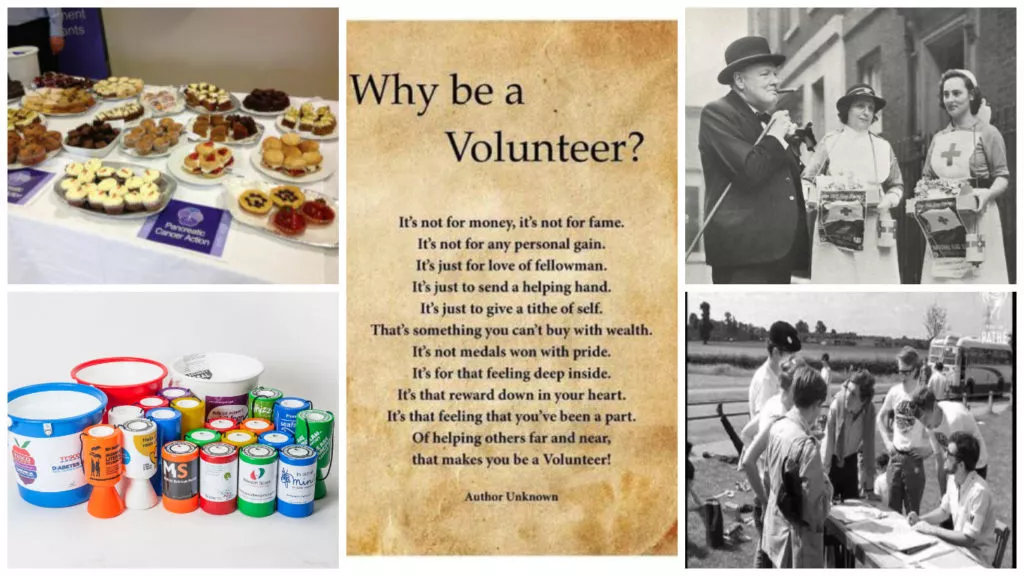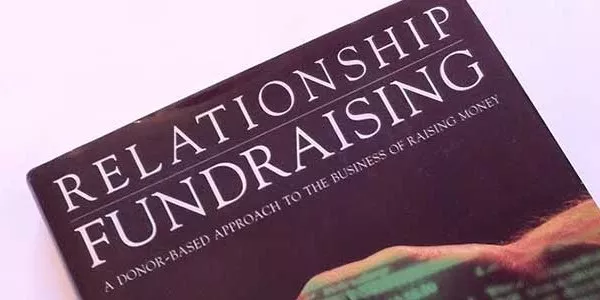A brief history of fundraising
This blog was first posted in May 2016 on 101 Fundraising. At the beginning of 2020 it seems appropriate to reflect on the crisis that hit fundraising in 2015. This is the first in a weekly series of blogs, some new, some previously posted elsewhere, that I will be posting over the coming weeks. I hope they strike a chord.
Giles Pegram CBE
1.i.2020
Once upon a time there was a need. A number of people recognised it and wanted to do something about it. They knew this would involve them giving money. That wasn’t a problem.
They needed to be organised, so they set up an office. An organisation. The government had decided that organisations like this should have special advantages. They were called charities.
Still, at its core, were people who wanted to meet a need, give money and feel good about it.
This isn’t new. There is reference to fundraising for good causes in the Christian Bible and many other religions too. In his book ‘Foundations for Fundraising’ Redmond Mullin gives a detailed picture of traditional fundraising with the story of the re-building of Troyes Cathedral around 1400, the time of the battle of Agincourt.
Fundraising has always been about connecting donors with the cause. Fifty years ago, volunteers created activities to help them do that: flag days, house to house collections, cake sales, sponsored walks, jumble sales and events. They weren’t necessarily very efficient. But they involved donors and volunteers as passionate advocates.
The vast, vast, majority of charities are still run without paid staff.
Then some of the larger charities began to employ paid fundraisers. They would co-ordinate the volunteers and create even more opportunities for donors to be connected to the cause. Fundraising was still about meeting needs and bringing about change. Happily, there are many charities which still operate in this way.
Unfortunately, there are many others for which things started to go wrong.
Fundraising as a technique
Charities started to become more professional. In itself, no bad thing. But ‘professional’ is a double-edged sword.
Managers were appointed who had no idea of the original concept of ‘charity’. The charity was now at the centre. It did good work. It needed money. So it employed fundraisers to raise the money. They would organise activities.
So fundraising became increasingly ‘professional’. Charities employed marketing experts from the business world. Some even suggested that fundraising was a branch of marketing.
Fundraisers had learned from business how to segment, increase response and create “products”. They created databases, and turned donors from people into Unique Reference Numbers. They learned the lessons of making direct marketing ever more efficient. Which, in turn, led to increased targets. They saw that fundraising was scalable, and what is more, could be made yet more efficient by defraying costs over ever larger mailing volumes. They tested to the nth degree.
There has been a huge proliferation of TV channels too. This fragmentation of the audience has meant that now even smaller charities can afford a presence. And the ever increasing penetration of PCs, laptops, smartphones and tablets has meant a huge increase in the volume of charity communications as organisations tried to mirror the way we live our lives.
The fundraising process has become mechanised. Fundraising departments have now become smooth, slick operations. Machines. Fundraising has become an activity to raise money for the charity, not a vehicle to connect donor and cause. Fundraisers are fundraising at people.
In turn, donors are looking for defensive strategies; ways to manage the increasing demands put on them.
The question now is how we find ways to re-connect with them?
Short term vs long term
But it isn’t just that fundraising was driven by technique. This increase in professionalism applied also to CEOs and finance directors. They wanted results. The bottom line. A CEO may be in post for five years and needed a good track record. She wanted to show trustees that she could achieve year-on-year growth. Fundraising enabled that to happen.
This was a different frame of reference. Donors were a means to an end.
There is a fundamental dichotomy. Ev en though relationships with donors should be long term, fundraisers are judged by monthly performance against budget. Each year, department by department, an annual budget is set. And even a monthly cash flow. Income is monitored monthly, with variances needing to be explained.
The very walls of our offices whisper ‘budgets’.
Even volunteers became cogs in the machine. If there was a shortfall against budget, we would ask volunteers to organise another event. Never mind the volunteer experience. Even volunteers were a means to an end.
It was short term over long term.
You spent x and you raised y. You spent x and you raised more than y. This was regarded as ‘better’.
All became subsumed into arbitrary year end targets.
Advertisement
The Donor
No-one asked how the donor was feeling. What effect was ‘technique’ and ‘short termism’, having on her giving?
If we had asked her, she would have told us that she felt she was on a conveyor belt. She was bombarded. She would have talked of her ‘charity bills’. Too many appeals created dissonance. She didn’t have the skills to judge one charity ‘better’ than another. Giving was no longer a pleasure. The pleasure had been replaced by a feeling of ‘not being able to do enough’.
We had let people down.
The donor had been lost.
Today
And so the inevitable happened. Charities needed more money. Pressure was put on fundraisers to raise more money. They put pressure on donors. Ask. Ask more. Ask more and more often.
The fundraising edifice collapsed.
There was a crisis of confidence. And last summer, much-respected charities suffered severe reputational damage.
Let’s start again
So let’s go back to the beginning.
It’s now the 21st century. We’re not going back to flag days. (Unless, of course, volunteers want to organise them.) Nor can we continue to push and push DM, DRTV, telephone asks, front end premiums etc. There will be a paradigm shift. We don’t know how it will be expressed or experienced. Any more than we could have predicted 50 years ago how fundraising would look now.
But one thing is certain. Donors will once again be at the heart of our thinking.
In the relationship between donor and cause, the charity should get out of the way.
There will need to be a cultural shift. It will need to run through everything that we do. Trustees, CEOs, finance directors and appeals directors will need to see the benefits of taking a longer term view of fundraising, as well as the shorter term one needed for the charity to survive. Annual priorities, objectives and appraisals will have to be re-thought. Everyone will need to consider the donor experience. Of course, this won’t happen over-night. Years. Maybe a decade or more.
Behind this, though, is one fundamental principle. We will give donors choice. Why should we not put the decision to give into the hands of the donor? “I want to be a person who decides what I give.” Why do we assume that, if given a choice, donors will give less?
To ask an extreme question, should we ‘ask’ at all? Or do we powerfully articulate the need, show that there is a solution, and give donors and potential donors the opportunity to be part of that solution?
Why isn’t the flow of fundraising communications:
To tell her that we know her. Tell her she has done so much. Thank her for the difference she has made to the beneficiaries of the charity. Tell her about work that she, and other donors, have made possible. Answer her questions. And, yes, from time to time, give her the opportunity to increase her direct debit, or give an additional gift. And feel good about it.
She should always feel better after the communication than before it.
“Would you like to increase your direct debit?” or “Will you increase your direct debit?”
What is the difference? To the first question, a donor can say “No, thank you” and still feel good about her support. To the second one, if she says “No”, she may well feel less good. She has turned down a request from her favourite charity.
This may be a subtle distinction. But it is important. Are we asking for money? Or enabling millions of donors to make a difference to the world?
We must change our approach.
Summary
For decades, even centuries, fundraising was good.
Then, for many, it went wrong.
In the future, fundraisers will once again connect donor and cause. And they will think in the long term as well as the short term. Donors will have a choice. We will give donors a good experience. They will want to remain involved. They are helping to make the world a better place.
Will we raise less in the short term? Possibly. That’s why we reject it. “In tests, it didn’t work.” But, will it raise more in the medium to long term? Almost certainly.
Will a donor give more in her lifetime if she feels really engaged with the causes she supports? Or if she just responds to repeated requests for money?
Surely it’s a no-brainer?
Where do we go from here?
In 1992, Ken Burnett wrote Relationship Fundraising. It was constantly talked about, but rarely implemented.
At the moment, we talk relationships, but manage short-term performance
Ken and I are now working together on The Commission on the Donor Experience. As you can infer from the above, we believe that if fundraisers give donors a good experience, they will give more money.
Which must be right.







